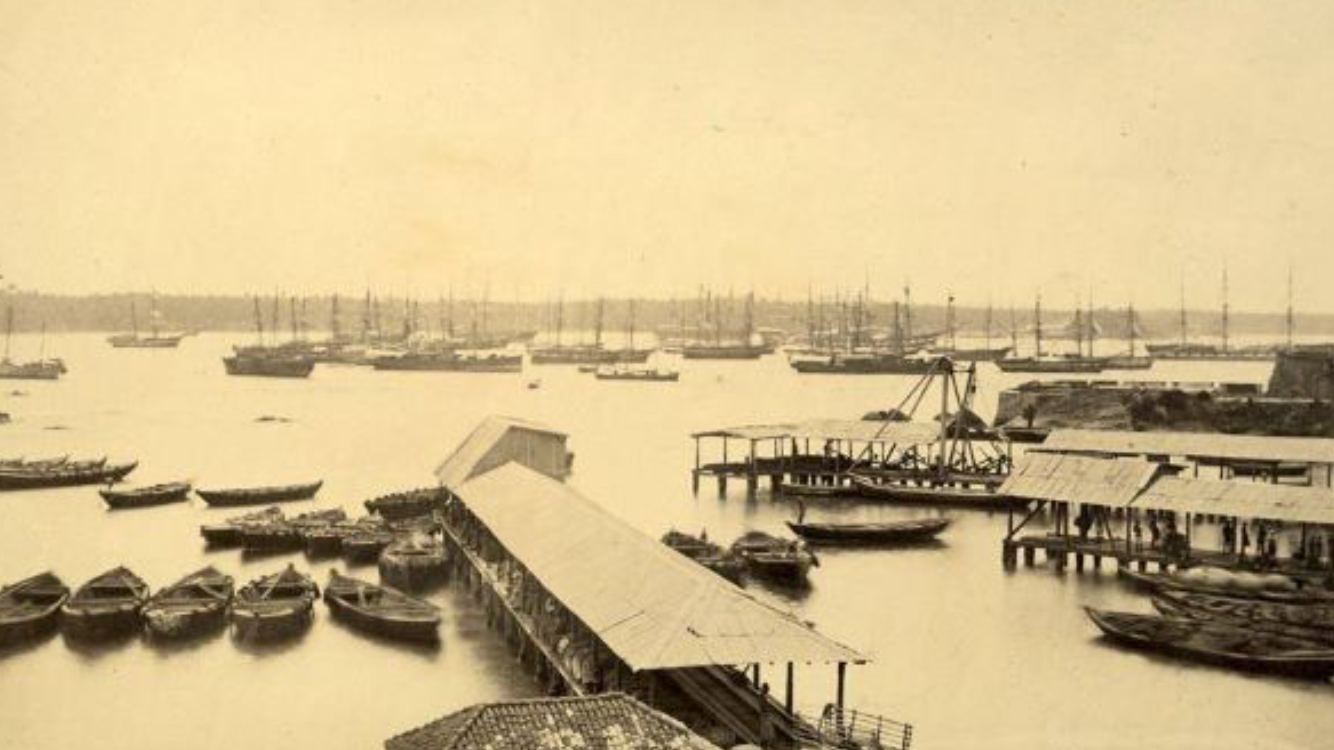From the 14 th.Century till the British built the Colombo harbor in 1884, Galle was Ceylon’smain port. It had reached its zenith during the time of the Portuguese, the Dutch and the British. But in the 1870s and 1880s, its fortunes began to decline due to a number of factors,including the construction of Colombo harbor.However, with the recent development of the Dutch-built Galle Fort as a quaint little “European” outpost, there is a renewed interest in developing Galle harbor too.
With the blue waters of the palm-fringed bay providing a picturesque setting, Galle port is to be developed as a leisure hub with yachting as the principal attraction. Government plans to spend US$ 175 million to US$ 200 million on this ambitious four-year project. It will be executed by a private and public sector partnership with the Sri Lanka Ports Authority (SLPA) as the facilitator. Both domestic and foreign investors are to be welcomed.
The tasks for the project include two offshore breakwaters to maintain calmness in the Galle Bay and harbor, accommodation for large cruise ships, and the construction of a state-of-the-art cruise terminal. Water–based sports like scuba diving and reef exploration will be facilitated. In addition, the rich heritage of Galle city (mainly Dutch) will be show-cased. Reclamation of 40 acres of land will also be undertaken as was done for the Colombo Port City. Simultaneously, efforts will be made to improve the status of Galle as a commercial port, the Minister of Ports, Rohitha Abeygunawardena,said.
A Medieval Port
According marine archeologist Lt.Com. (Rtd) Somasiri Devendra, author of From Wooden Walls to Ironclads: Galle enters the Age of Steam, Galle port was not an ancient port but a medieval one. The great Chinese admiral Zheng He had commemorated his visit in 1411 by leaving a trilingual inscription in Chinese, Tamil and Arabic, indicating Galle’s cosmopolitan trading character. When the Portuguese arrived in 1505, they built a fort. But it was when the Dutch took it in 1640, that the city rose to greatheights and Galle was second only to Batavia (modern Jakarta) in the Dutch Asian empire. The Dutch left an indelible impression on Galle. When the British took over in 1796, theyretained the Dutch ambience, but the port became more active thanks to Pax Britannicawhich spurred commercial activity globally.
However, though Galle port gave shelter, danger was lurking under the waters. The reefs and rocks at the entrance to the harbor caused shipwrecks making the bay a grave yard of many vessels. Devendra says that though there were pilots to steer the ships through the obstructions, there were instances of ships sinking while waiting for the pilot to arrive. Between 1860 and 1866, three Peninsular & Oriental (P & O) ships including Malabar, had sunk. And between 1872 and 1875, three more vessels Rangoon, Agra and Effort, had gone down. By 1998, archeologists had spotted 26 wrecks, he says. According to one account, removal of dangerous rocks might have been discouraged by a local belief that such disruption would cause the Galle fort to sink. Besides, the port was exposed to the southwestmonsoon. Today, however, the port is much safer, and the shipwrecks of the past are in fact, a marine archeologist’s delight.
Till the end of the 19th.Century, Galle had a lead over other ports in Ceylon, because it was on the main West-East shipping route. The opening of the Suez Canal in 1869, increased shipping on this route. But the onset of steam vessels, demanded that Galle harbor be made capable handling more vessels of higher tonnage.According to Devendra, huge quantities of coal were required by the steamers. For example, the 150 hp Ida Pfeiffer consumed more than one ton of coal every hour. Previous ships used 50 tons a day. And coal did not come cheap. Devendrasays that in the 1850s, Galle imported 50,000 of coal a year from Cardiff in Britain. A local entrepreneur, Simon Perera Abeywardena,supplied coal and water to the vessels and also made a business of salvaging material from shipwrecks.
P&O ships carrying mail became more numerous as there was a demand for frequent and speedier communication. In Ceylon itself,the demand for overseas mail increased. Burgher entrepreneurs Johanna Morris, Dr.P.D.Anthonisz, and Henry Andre, started the Galle Royal Mail Coach Service with W.F.Jansz as the manager. Steamers from China, Australia and Bombay, together with numerous ships laden with coal for their use, gave the Galle harbor “a lively appearance, adding much to its natural duty,” says Devendra quoting www.bl.uk.
However, with the establishment of the General Post Office in Colombo in the 1890s, Galle lost its importance in mail service, though the “Lady” ships of the Ceylon Steamship Company with names like Lady MCCallum and Lady Havelock, called at Galle as they went around the island carrying passengers and cargo.
Governor William Gregory
As shipping marched forward due to technological improvements and the opening of the Suez Canal, Galle port could not accommodate the growing demand from larger ships, because of the natural obstacles at the entrance. Sir William Gregory (Ceylon’s Governor between 1872 and 1877), took the decision to build a safe and modern harbor in Colombo rather than make a futile bid to improve or expand Galle harbor. In a telling experience, he witnessed a shipwreck at Galle harbor. B. Bastiampillai writes in his book The Administration of Sir William Gregory that the vessel Peshawar which was bringing Gregory’s luggage bumped against the rocky bottom. “He saw the forlorn masts of a vessel spitted on a reef,” Bastiampillai says.
Gregory pressed the Colonial Office in London to approve construction of the Colombo harbor. The Colonial Office was favorable and Sir John Coode was appointed Consultant Engineer. In May 1873, John Kyle was made Resident Engineer. But the Treasury back in London refused to fund the venture as the shipping lines plying in the Britain–Far East-Australia route favored Galle and wanted Galle improved. But Gregory, backed by the Board of Trade, argued that Galle could not be improved and that it would be more sensible to build a safe port in Colombo and also serve the plantation sector in the island. Unlike Galle, Colombo was well connected with the coffee-growing districts by rail and coffee was a valuable export crop.
Furthermore Gregory felt that Colombo would better serve India’s ports on the West coast such as Bombay. He also pointed out that ships would be able to enter Colombo harbor at any time and coaling could be done at the pier, which was not possible in Galle. Most importantly, wrecks were few and far between.
Bastiampillai writes: “The Governor’s persistent appeals, backed by the Colonial Office’s consistent support, and the Board of Trade’s and the Admiralty’s expert opinions wore own the Treasury. After a correspondence of a year and a half, and strong hesitation, a loan of 50,000 pounds was promised. The P&O, Lloyds and Messageries Maritimes , who had been urging the Treasury to compel Ceylon to better Galle harbor, had lost the contest. As the breakwater was estimated to cost 630,000 pounds Ceylon had to provide the balance through a loan in the open market. In 1875, the Prince of Wales laid the foundation stone and construction was pushed on.”
The shipping companies which argued vehemently for Galle, moved to Colombo as Colombo became one of the best harbors to serve Easter shipping, Bastimapillai adds.
Galle didn’t Die
But Galle port did not die. During World Wars I and II, and also during the Eelam Wars, Galle port as the HQ of the Southern Naval Command, served as a backup to Colombo. It helped operationalize the Rubber-Rice Pact with China in the 1950s, served the Prime Flour Company and brought clinker to the Cement Factory. Today, it is set to be a pleasure hub for cruises and yachting.
END





